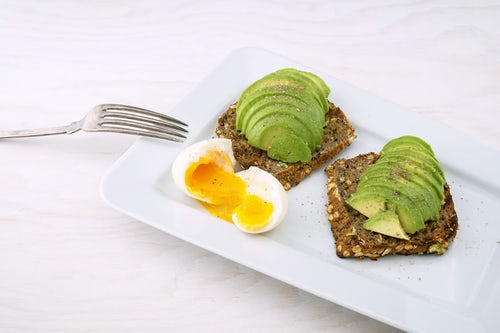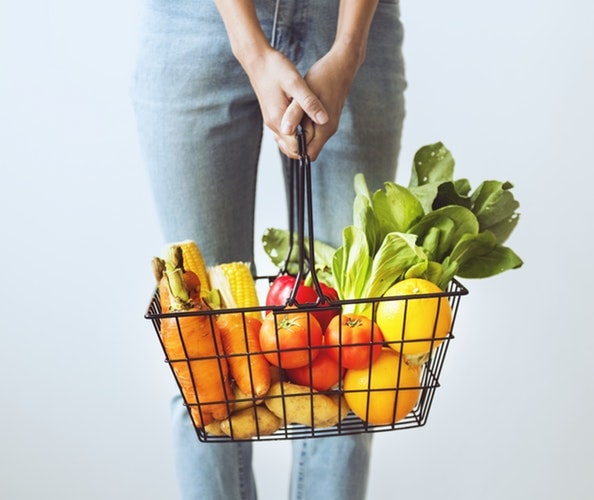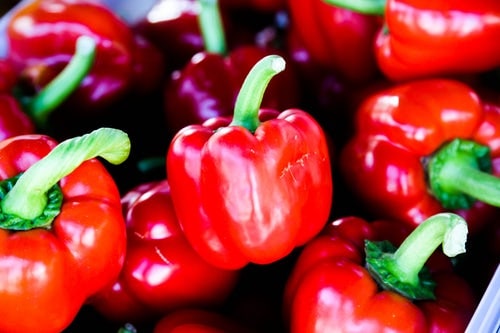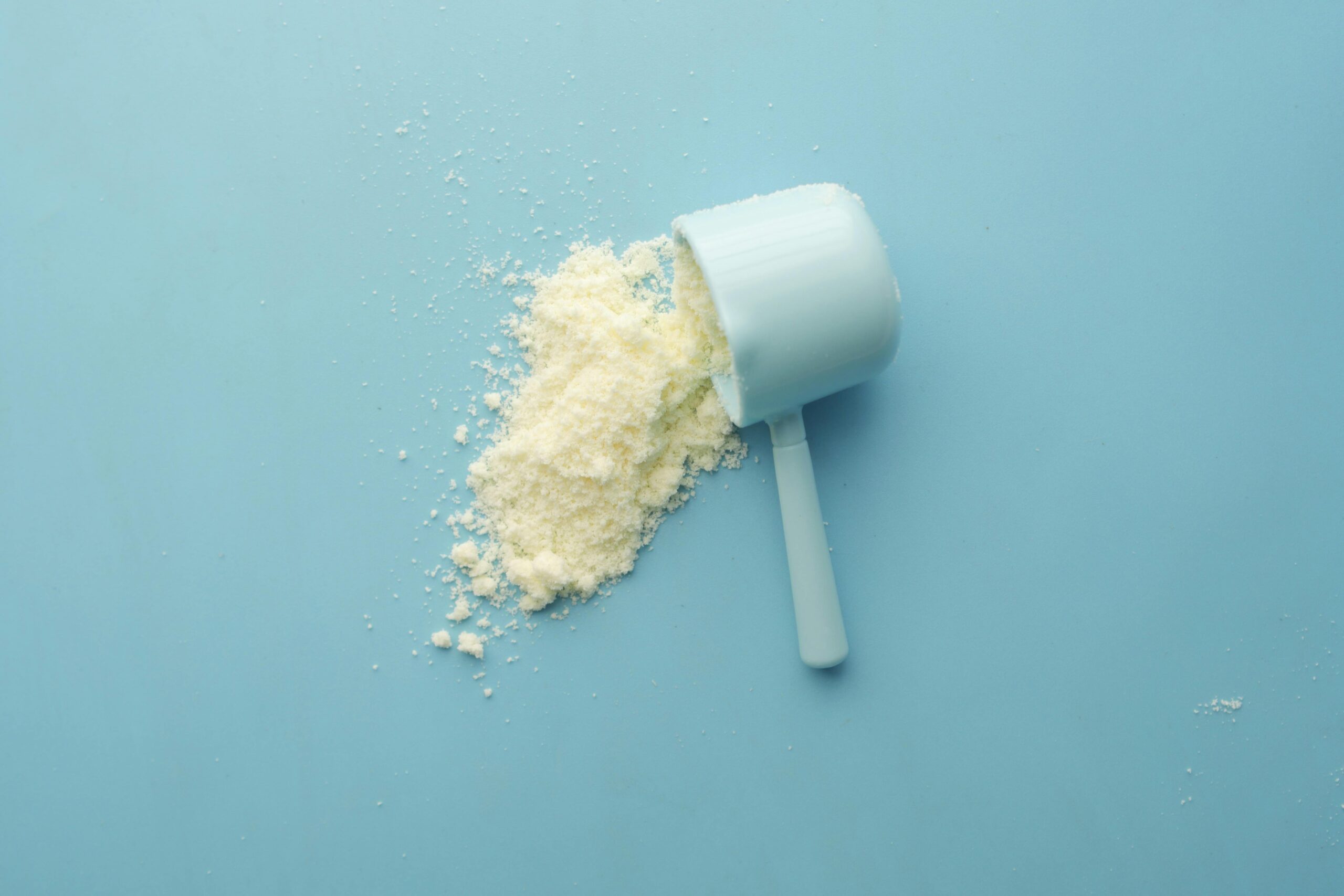The production of and exposure to substances which damage our cells is a natural part of everyday life and our bodies are exceptionally adept at picking up on and correcting the damage as it occurs, and it is only when our bodies ability to recognise or heal this damage is exceeded that it becomes a problem. Cancer is a disease which is an example of what can happen when the body’s ability to correct cell damage fails for any number of reasons. Cancer begins when the genetic material (DNA) within our cells is damaged and the cell is unable to repair this damage which means that the damaged DNA is passed on to all cells which divide from that original damaged cell. This damaged DNA can cause rapid replication of these abnormal cells and the natural processes the body would usually employ to destroy such damaged cells is overridden, that is the cells are immune to destruction which results in uncontrolled cell division and these cells then invade areas of the body where they do not belong and cause damage in these areas.
When it comes to food and cancer there is no diet or food which has been proven to prevent nor cure cancer however nutrition status, in particular micronutrient deficiency or excess, influences DNA damage and as a consequence cancer risk1-4. There are many micronutrients which play vital roles in ensuring healthy DNA metabolism and repair1,2 and it is therefore realistic to conclude that having an adequate amount of these micronutrients would contribute to a decreased risk of error occurring and therefore decreased risk of developing cancer. The micronutrients our body uses to repair and metabolise DAN come directly from the foods we eat therefore food and in particular optimising our intake of important micronutrients involved in DNA metabolism and repair has the potential to offer a level of cancer protection.
In this post we are going to discuss three micronutrients that are indicated to be protective against DNA damage namely calcium, folate and vitamin C. I will also give some food sources where you can find good levels of each and examples of quantities of food and food combinations to meet your needs over a day.
Calcium

Calcium better well known for its role in healthy bone development and maintenance also plays a number of roles in ensuring correct cell division5,6 and destruction of damaged cells. All of which are vital regulatory processes which decrease the risk of cells damaged cells going unidentified and corrected and becoming cancerous. A number of studies have shown a reduced calcium intake to be associated with increased risk of colorectal cancer7-9. Colorectal cancer, or bowel cancer as it is more commonly known, was the second leading cause of death in Australia in 2016 and is projected to maintain the same status in 201910 therefore this finding of the potential preventative effects of a diet containing adequate calcium are significant.
What Foods Contain Calcium?
Dairy – hard cheese is the highest source (for example cheddar or parmesan), milk, yoghurt and custard.
Tinned fish with bones (sardines and salmon)
Tofu
Nuts
Dried figs
Tahini (sesame seed paste)

How Much?
Current Recommended dietary intake (RDI) for calcium from the Australian Dietary Guidelines (ADG)11.
Females 19-50yrs old and Males 19-70yrs old: 1000mg/day
Females over 50yrs old and Males over 70yrs old: 1300mg/day
A conservative Upper Limit (UL) of intake that is the amount it is recommended to not exceed in any one day is 2500mg/day. This UL has been established because of the potential calcium has to interfere with absorption of other micronutrients including zinc and iron. Toxic effects of calcium have only been observed through high supplementation with calcium carbonate and have never occurred through food intake.
What This Looks Like in Food
You can meet your calcium need of 1000mg a day by consuming:
250mL milk (300mg)
40g hard cheese (300mg)
1cup ice-cream (200mg)
200g yoghurt (300mg)
Total: 1100mg
Or if you do not eat dairy:
250mL calcium fortified dairy milk alternative (almond, soy) (300mg)
6 dried figs (80mg)
2tbsp tahini (130mg)
150g calcium fortified tofu (130mg)
2 handfuls almonds (approx. 50) (150mg)
225g (1 cup raw) spinach (200mg)
2 slices whole wheat bread (60mg)
Total: 1050mg
Folate

Folate is one of the B-vitamins (B9) and has a number of important roles in the stabilisation and protection of DNA12 as well as the regulation of proper cell division which is clearly important in cancer prevention because a distinguishing feature of cancer is unregulated and uncontrolled cell division.
We spoke above about how a low intake of calcium has been identified as a risk factor for the development of colorectal cancer similarly a lower intake of folate has been associated with a higher risk of developing colorectal cancer13-19 and when both calcium and folate intake are low the risk of colorectal cancer is further increased3,7-9.
What Foods Contain Folate?
Beef liver
Asparagus
Avocadoes
Green leafy vegetables (kale, spinach, broccoli)
Legumes (kidney beans, lentils)
Eggs
Seafood
Peas
Grains (eg whole-wheat bread)

How Much?
RDI for Men and Women over the age of 19yrs old: 400µg/day.
An UL of 1000µg/day had been established due to a number of reasons including the fact that a high folic acid intake can further exacerbate the neurological damage of people with a B12 deficiency21 toxicity22 and adverse effects on both reproduction and developmental22-26.
What This Looks Like in Food
1 cup beetroot (150µg)
100g (1/2 regular size Hass) avocado (80µg)
2tbsp peanut butter (30µg)
4 spears asparagus (88µg)
2 large eggs (48µg)
1 banana (24µg)
Total: 420µg
Beef liver is the most concentrated form of folate with 85g providing 212µg of folate. Or just 1 cup cooked black eyed peas or lentils both almost your entire days need a 360µg of folate each.

Vitamin C

Studies have found a decreased risk of cancer in populations with a higher intake of fruits and vegetables the universal indicator of a diet containing good levels of vitamin C27. because vitamin C is found in all fresh fruits and vegetables.
Amongst other roles in the body vitamin C also acts as an antioxidant. Antioxidant is a term you’ve likely heard, and it encompasses a number of substances which neutralise harmful free-radicals or reactive oxygen species that are produced through every day metabolic reactions and which if they were left unchecked within our bodies, could go on to cause cell damage. Our bodies produce both free radicals and antioxidants naturally every day which means that usually the antioxidants our bodies produce cover the number of free radicals our bodies also produce and there is no problem. However, there is a way we can give our bodies a little help because the plants we eat also produce a vast array of antioxidants. Therefore, it is thought that consumption of these plant derived antioxidants will have the same action in negating free radicals within our bodies and therefore contribute to conferring cancer preventative affects in the human body.
What Foods Contain Vitamin C?
All fresh fruit and vegetables contain vitamin C in varying concentrations therefore if you have a good fruit and vegetable intake in general you will likely be meeting your needs.
Capsicum
Tomatoes
Spinach
Carrots
Acerola cherries
Guavas
Kiwi fruit
Papaya
Strawberries and blackberries
Liver

How Much?
RDI for Males and Females over the age of 19yrs old: 45mg/day.
This is a conservative RDI and is based on the amount of vitamin C needed to prevent Scurvy not for health optimisation or with the intention of cancer prevention.
There is no known upper level for vitamin C established however it is suggested that at 1000mg/day not be exceeded to be cautious28,29.
What This Looks Like in Food
Meeting the RDI for vitamin C intake is fairly simple if you are eating any fruit and vegetables you’ve got this covered as just one medium orange or kiwi fruit will provide you with around 70mg of vitamin C each. Chilli and both high in vitamin C with half a cup of chopped capsicum containing 181mg of vitamin C.

Take Home Messages
While there is no diet or food proven to prevent or cure cancer there are some micronutrients which are integral in governing the processes that ensure our bodies are best equipped to deal with the daily wear and tear that if left unidentified and uncorrected has the potential to go on to cause amongst other disturbances, cancer. In this post we looked at just three of these micronutrients, calcium, folate and vitamin C, found in good amounts in a variety of common foods that you can take advantage of to potentially lower your risk of cancer development.
It is important to recognise here that both deficiency and excess of any micronutrient has the ability to cause disruption and harm in the body and therefore I am not recommending that anyone rush out and purchase supplements of these or any other micronutrients without detailed dietary analysis and the recommendation of a credible health professional. This is for the reason that if you are consuming an adequate and variety filled diet which will naturally contain these micronutrients you are likely meeting your bodies needs for these micronutrients to carry out effective cancer preventative measures. On top of this we know that micronutrient needs are individualistic and increasing or decreasing doses do not impact all people in the same way. Health is not found in a vitamin bottle, magical potion or pill and anyone who is trying to convince you it is likely is selling those things, true health is eating to meet your body’s needs for nutrients and energy and for the majority of us this can be met through natural, common and readily available foods. If you have concerns or questions or would like a more detailed assessment of your micronutrient intake and a dietary plan tailored to your specific needs do not hesitate to give me a phone call and we can work together to truly optimise your health and vitality.
With my whole heart I hope you found this information useful and inspiring.

Become Great. Live Great.
Bonnie.
Reference
1. Ames BN and Wakimoto P. Are vitamin and mineral deficiencies a major cancer risk? Nat. Rev. Cancer. 2002. 2, 694-704.
2. Fenech M. Nutritional treatment of genome instability: a paradigm shift in disease prevention and in the setting of recommended dietary allowances. Nutr. Res. Rev. 2003;16:109–122.
3.Willett W C. Diet and cancer: one view at the start of the millennium. Cancer Epidemiol. Biomarkers Prev. 2001;10:3-8.
4. Fenech M. Chromosomal biomarkers of genomic instability relevant to cancer. Drug Discov. Today. 2002; 7:1128-1137.
5. Xu N, Luo KQ and Chang DC. Ca2þ signal blockers can inhibit M/A transition in mammalian cells by interfering with the spindle checkpoint. Biochem. Biophys. Res. Commun. 2003;306:737-745.
6. Honda S, MarumotoT, HirotaT, Nitta M, Arima Y, Ogawa M and Saya H. Activation of m-calpain is required for chromosome alignment on the metaphase plate during mitosis. J. Biol. Chem. 2004; 279:10615-10623.
7. Lamprecht SA and Lipkin M. Chemoprevention of colon cancer by calcium, vitamin D and folate: molecular mechanisms. Nat. Rev. Cancer. 2003;3:601-614.
8. Giovannucci E. Diet, body weight and colorectal cancer: a summary of epidemiological evidence. J. Womens Health. 2003;12:173-182.
9. Cho E, Smith-Warner SA, Spiegelman D, Beeson WL, van den Brandt PA, Colditz GA, Folsom AR, Fraser GE, Freudenheim JL, Giovannucci E, Goldbohm RA, Graham S, Miller AB, Pietinen P, Potter JD, Rohan TE, Terry P, Toniolo P, Virtanen MJ, Willett WC, Wolk A, Wu K, Yaun SS, Zeleniuch-Jacquotte A and Hunter DJ. Dairy foods, calcium, and colorectal cancer: a pooled analysis of 10 cohort studies. J. Natl Cancer Inst. 2004;96:1015–1022.
10. Cancer Australia. Australian Government. 2019. Bowel cancer statistics. Bowel cancer (colorectal Cancer) in Australia. [Online] Available from: https://bowel-cancer.canceraustralia.gov.au/statistics
11. Nutrient Reference Values for Australia and New Zealand. Australian Government National Health and Medical Research Council. Ministry of Health. Manatu Hauora. [Online] Available from: https://www.nrv.gov.au/home.
12. Choi SW and Mason JB. Folate status: effects on pathways of colorectal carcinogenesis. J Nutr. 2002;132(8 Suppl):2413S–8S.
13. Kim YI. Folate and DNA methylation: a mechanistic link between folate deficiency and colorectal cancer? Cancer Epidemiol Biomarkers Prev. 2004 13(4):511–9.
14. Giovannucci E. Epidemiologic studies of folate and colorectal neoplasia: a review. J Nutr. 2002 Aug;132(8 Suppl):2350S–5S.
15. Ma J, Stampfer MJ, Giovannucci E, et al. Methylenetetrahydrofolate Reductase Polymorphism, Dietary Interactions, and Risk of Colorectal Cancer. Cancer Res. 1997 March 15;57(6):1098–102.
16. Su LJ, Arab L. Nutritional status of folate and colon cancer risk: evidence from NHANES I epidemiologic follow-up study. Ann Epidemiol. 2001 Jan;11(1):65–72.
17. Sanjoaquin MA, Allen N, Couto E, et al. Folate intake and colorectal cancer risk: a meta-analytical approach. Int J Cancer. 2005 Feb 20;113(5):825–8.
18. Martinez ME, Giovannucci E, Jiang R, et al. Folate fortification, plasma folate, homocysteine and colorectal adenoma recurrence. Int J Cancer. 2006 Sep 15;119(6):1440–6.
19. Bailey LB. Folate, methyl-related nutrients, alcohol, and the MTHFR 677C!T polymorphism affect cancer risk: intake recommendations. J. Nutr. 2003;133(Suppl. 1):3748S–3753S.
20. Will JJ, Mueller JF, Brodine C, Kiely CE, Friedman B, Hawkins VR, Duta J, Vilter RN. Folic acid and vitamin B12 in pernicious anemia. Studies on patients treated with these substances over a ten-year period. J Lab Clin Med 1959;53:22-38
21. Hunter R, Barnes J, Oakeley HF, Matthews DM. Toxicity of folic acid given in pharmacological doses to healthy volunteers. Lancet 1970;1:61-3.
22. Czeizel AE, Dudas I. Prevention of the first occurrence of neural-tube defects by periconceptual vitamin supplementation. N Engl J Med 1992;327:1832-5.
23. Czeizel AE, Dudas I, Metneki J. Pregnancy outcomes in a randomised controlled trial of periconceptional multivitamin supplementation. Final report. Arch Gynecol Obstet 1994;255:131-9
24. Holmes-Siedle M, Lindenbaum RH, Galliard A. Recurrence of neural tube defect in a group of at risk women: a ten year study of Pregnavite Forte F. J Med Genet 1992;29:134-5
25. Vergel RG, Sanchez LR, Heredero BL, Rodriguez PL, Martinez AJ. Primary prevention of neural tube defects with folic acid supplementation: Cuban experience. Prenat Diagn 1990;10:149-52
26. Wald N, Sneddon J, Densem J, Frost C, Stone R. Prevention of neural tube defects: results of the Medical Research Council vitamin study. Lancet 1991;338:131-7
27. Aune D, Giovannucci E, Boffetta P, Fadnes L, Keum N, Norat T, Greenwood D, Riboli E, Vatten L, Tonstad S. Fruit and vegetable intake and the risk of cardiovascular disease, total cancer and all-cause mortality—a systematic review and dose-response meta-analysis of prospective studies. Int J Epidemiol. 2017;46:1029-56
28. Expert Group on Vitamins and Minerals. Safe upper levels for vitamin and minerals. London: Food Standards Agency, 2003.
29. German Nutrition Society (DGE), Austrian Nutrition Society (ÖGE), Swiss Society for Nutrition Research (SGE) Swiss Nutrition Association (SVE) Reference Values for Nutrient Intake. Bonn: German Nutrition Society, 2002.




5 thoughts on “3 Surprising Nutrients to Eat to Reduce Your Cancer Risk”
Really clear internet site, thanks for this post. https://ketoclarity.org/
Thank you so much I really appreciate you taking the time to give me feedback and I am very happy to hear that you found this post clear, easy to read and of value to you. You are more than welcome.
I have been reading out many of your stories and i can claim nice stuff.
I will surely bookmark your blog. https://snapketo.net/
Thank you I am really happy to hear that you enjoy my blog and find it useful <3
I have been reading out many of your stories and i can claim
nice stuff. I will surely bookmark your blog. https://snapketo.net/